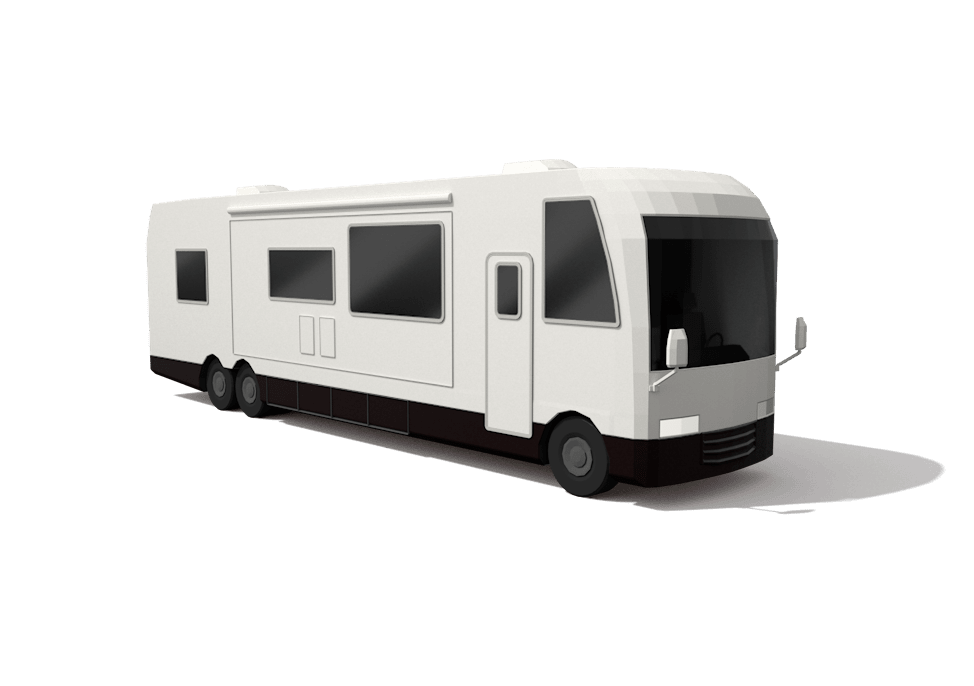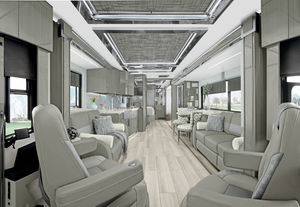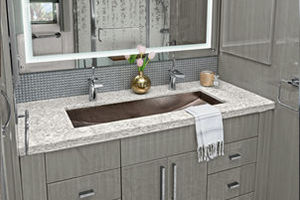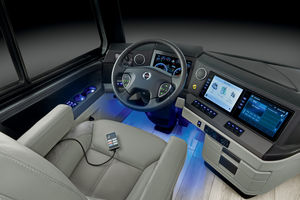- Spacious and well-equipped, even the smaller, basic models are roomy and can feel like home.
- The larger, more luxurious models have many of the bells and whistles of a custom home.
- Designed with extensive storage capacity and often include basement storage areas.
- Slideouts in some models move the RV wall outward up to three feet to create larger living areas. Many motorhome models include multiple slideouts which can add up to 6 extra feet of width in some RVs.
- Can also tow a small vehicle to use for short side trips once the motorhome is parked.

Camping with an upgrade
Class A motorhomes are built on specially designed motor vehicle chassis and do not require owning a separate tow vehicle. This type of motorhome often boasts between 1 and 4 slide-outs that can add up to 6 feet in width to your RV. Home-like amenities abound with full kitchens, bathrooms, living areas with entertainment centers, and centrally controlled heating and air conditioning. Scroll down to see more of the possible features and amenities.
Find an RV
Typical Features & Amenities
Frequently Asked Questions
-
Is it difficult to drive a Class A?
While it may seem daunting for new RVers, the controls in the cockpit of an RV look similar to your average car. Side view cameras, back-up cameras, and collision avoidance systems are options on most motorized RVs. This usually gives first-timers the confidence to get started and ultimately, learning to drive a motorized RV is a skill that becomes second nature with a little practice. Here are some tips to keep in mind when you are getting started.
-
Do I need a special driver's license to drive a Class A?
For most RVs, all that is needed is a regular driver’s license which makes purchasing an RV very accessible. Driver’s license requirements vary by state so you should always check the specific regulations in your state. There are a small number of states that have additional requirements such as a skills or a written test to drive the very large motorhomes. Your local department of motor vehicles will have specifics to help you get started.
-
What is the difference between a pull-through site and a back-in site?
RVers do become comfortable driving and backing up their RVs over time but many new RVers opt for a pull-through campsite their first few times in a campground. A pull-thru site is connected by two roads so you can pull in from one road and pull out onto another without having to back in and out of a space. These sites may not be as pretty or as private as back-in sites, but they are easier to navigate for a newbie.
Find an RV
Looking to buy or rent an RV? We can help get you behind the wheel.

Tips & Inspiration
From little-known state parks to iconic national monuments, there are amazing places to go RVing. Check out top recommendations from RV experts who also share everything you need to know about setting up your RV at a campground, hitching, driving and towing, and other maintenance how-tos.

Get More News & Inspiration!
Submit your email to get helpful tips and inspiration from Go RVing as well as information from our dealer partners on making your RV dream a reality.















